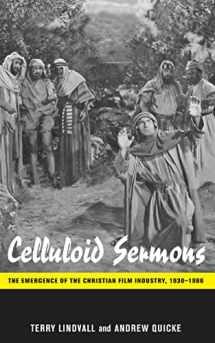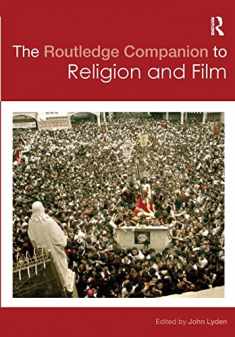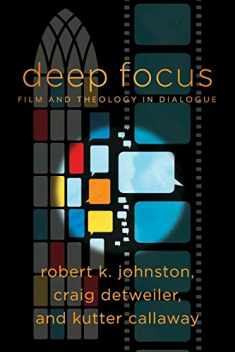
Celluloid Sermons: The Emergence of the Christian Film Industry, 1930-1986
ISBN-13:
9780814753248
ISBN-10:
0814753248
Author:
Andrew Quicke, Terry Lindvall
Publication date:
2011
Publisher:
NYU Press
Format:
Hardcover
287 pages
Category:
Christian Books & Bibles
,
United States History
FREE US shipping
Book details
ISBN-13:
9780814753248
ISBN-10:
0814753248
Author:
Andrew Quicke, Terry Lindvall
Publication date:
2011
Publisher:
NYU Press
Format:
Hardcover
287 pages
Category:
Christian Books & Bibles
,
United States History
Summary
Celluloid Sermons: The Emergence of the Christian Film Industry, 1930-1986 (ISBN-13: 9780814753248 and ISBN-10: 0814753248), written by authors
Andrew Quicke, Terry Lindvall, was published by NYU Press in 2011.
With an overall rating of 4.3 stars, it's a notable title among other
Christian Books & Bibles
(United States History) books. You can easily purchase or rent Celluloid Sermons: The Emergence of the Christian Film Industry, 1930-1986 (Hardcover) from BooksRun,
along with many other new and used
Christian Books & Bibles
books
and textbooks.
And, if you're looking to sell your copy, our current buyback offer is $0.3.
Description
Christian filmmaking, done outside of the corporate Hollywood industry and produced for Christian churches, affected a significant audience of church people. Protestant denominations and individuals believed that they could preach and teach more effectively through the mass medium of film. Although suspicion toward the film industry marked many conservatives during the early 1930s, many Christian leaders came to believe in the power of technology to convert or to morally instruct people. Thus the growth of a Christian film industry was an extension of the Protestant tradition of preaching, with the films becoming celluloid sermons. Celluloid Sermons is the first historical study of this phenomenon. Terry Lindvall and Andrew Quicke highlight key characters, studios, and influential films of the movement from 1930 to 1986—such as the Billy Graham Association, with its major WorldWide Pictures productions of films like The Hiding Place, Ken Curtis’ Gateway Films, the apocalyptic “end-time” films by Mark IV (e.g. Thief in the Night), and the instructional video-films of Dobson’s Focus on the Family--assessing the extent to which the church’s commitment to filmmaking accelerated its missions and demonstrating that its filmic endeavors had the unintended consequence of contributing to the secularization of liberal denominations.


We would LOVE it if you could help us and other readers by reviewing the book
Book review

Congratulations! We have received your book review.
{user}
{createdAt}
by {truncated_author}




